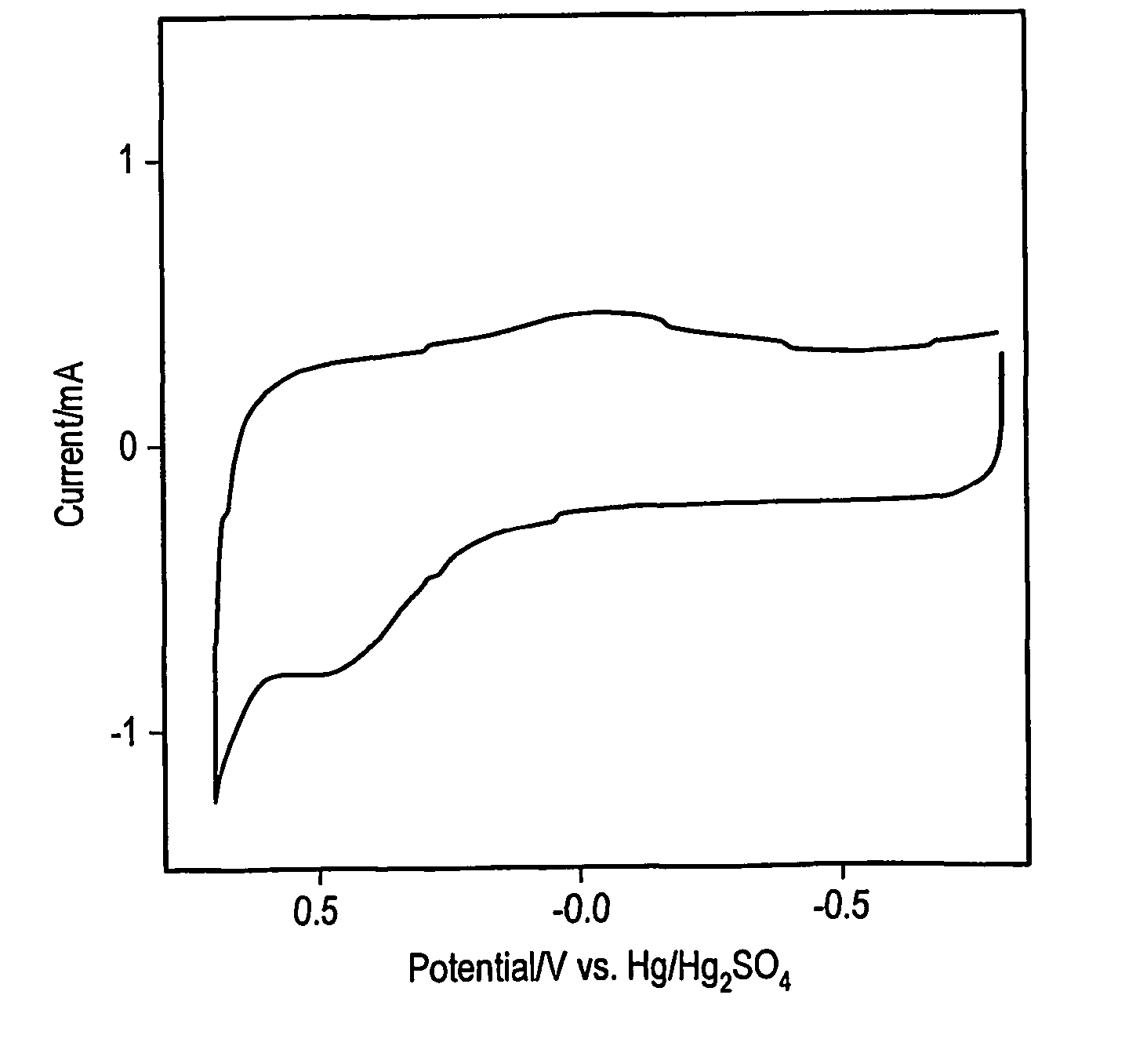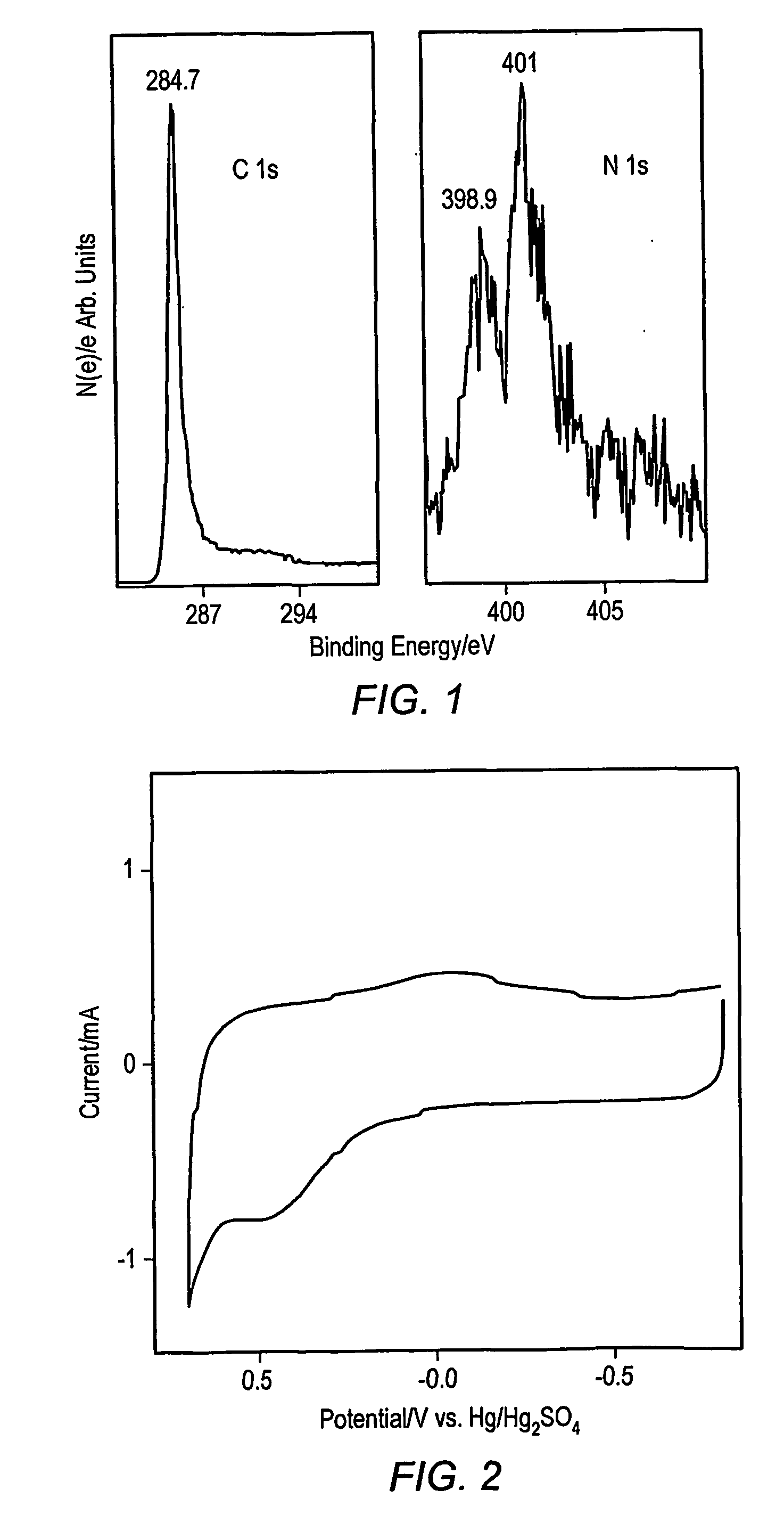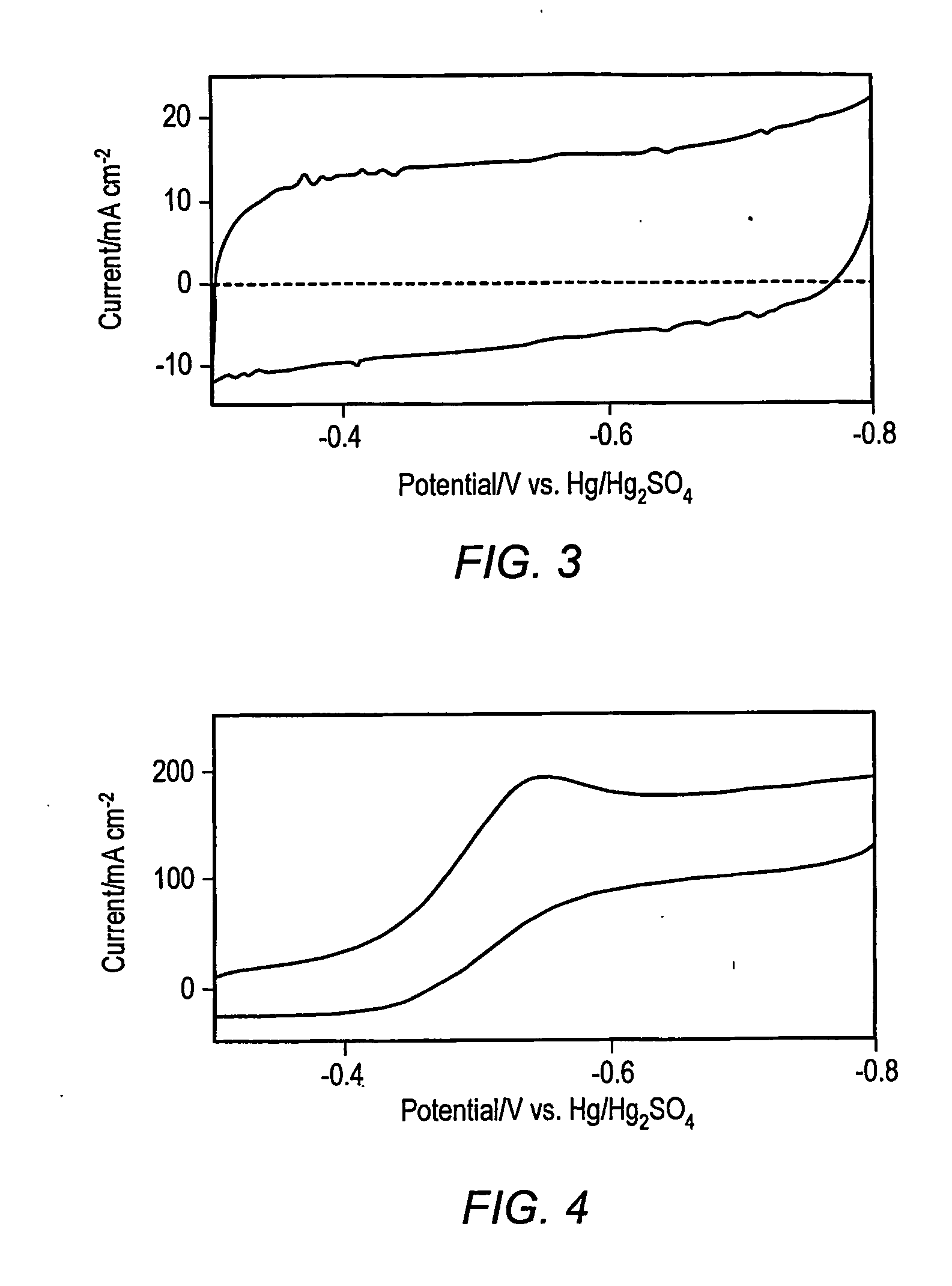Carbon Nanostructure-Based Electrocatalytic Electrodes
- Summary
- Abstract
- Description
- Claims
- Application Information
AI Technical Summary
Benefits of technology
Problems solved by technology
Method used
Image
Examples
Embodiment Construction
[0022] While several methods such as arc and laser deposition have been used for producing carbon nanotubes (CNT) and carbon nanofibers (CNF), chemical vapor deposition (CVD) methods may be more facile for large scale production of well defined carbon-based films and arrays. In an embodiment, a method of forming carbon nanostructures may be based on the bulk pyrolysis of metal phthalocyanines. (A discussion of such methods may be found in Huang, S.; Dai, L.; Mau, A. W. H.; J. Phys. Chem. B., 1999, 103, 4223.) Examples of synthesis methods may produce CNFs and CNTs that are substantially aligned perpendicular to the supporting substrate. Several investigators have conducted electrochemical investigations of SWCNTs, MWCNTs and CNFs electrodes made by spin coating suspensions onto conductive substrates. Others have relied upon gross transfer of a carbon film from a growth substrate onto a conductive surface. In the former case, the films formed by such spin coating methods typically in...
PUM
| Property | Measurement | Unit |
|---|---|---|
| Temperature | aaaaa | aaaaa |
| Electrical conductor | aaaaa | aaaaa |
| Catalytic activity | aaaaa | aaaaa |
Abstract
Description
Claims
Application Information
 Login to View More
Login to View More - R&D
- Intellectual Property
- Life Sciences
- Materials
- Tech Scout
- Unparalleled Data Quality
- Higher Quality Content
- 60% Fewer Hallucinations
Browse by: Latest US Patents, China's latest patents, Technical Efficacy Thesaurus, Application Domain, Technology Topic, Popular Technical Reports.
© 2025 PatSnap. All rights reserved.Legal|Privacy policy|Modern Slavery Act Transparency Statement|Sitemap|About US| Contact US: help@patsnap.com



